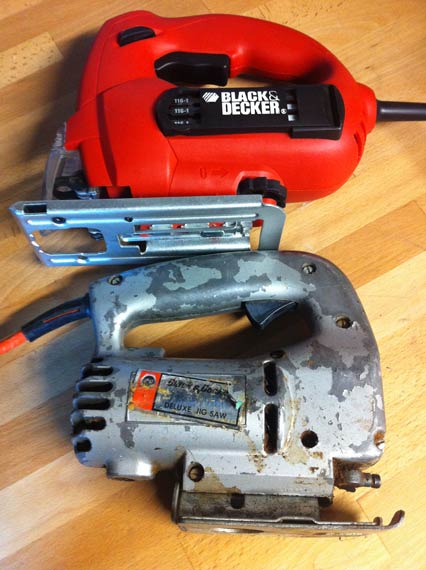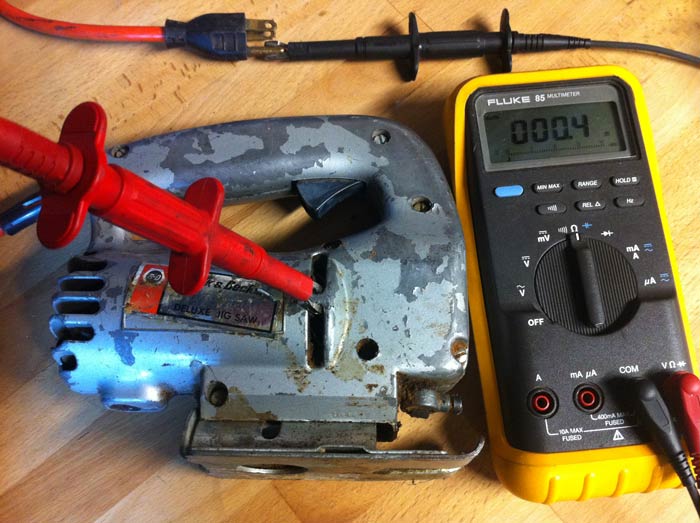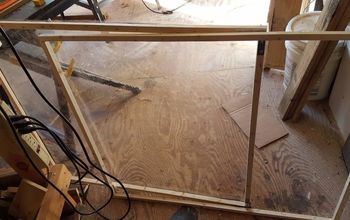620 Views
Power Tool Insulation

by
Steve
(IC: blogger)
Older power tools were single insulated. The wiring, motor, and switch were insulated from the case, but the case was made of metal. It was able to conduct an electric current. If an energized component within the tool shorted to the case, the case could become energized. A third wire was added to the plug. This third ground wire was connected to the case of the tool. If an energized component shorted to the case, a large current would flow through the low resistance ground wire and clear the fault (trip the circuit breaker).
Newer power tools are double insulated. The wiring, motor, and switch are insulated. The case is also made of a non-conductive material such as plastic. Many of these newer tools do not need a three conductor plug. They are much safer to use, especially in damp conditions.
Do not use an older metal case tool if the plug only has two prongs. A three conductor plug can be added as a replacement. The third conductor (green) is attached to the case of the tool with a screw. The ground screw is usually colored green. The ground conductor can be tested without disassembling the tool. A multimeter, set to measure resistance, can be connected between the ground prong of the plug and the case of the tool. The resistance should be very low. It is a good idea to use a ground fault protected receptacle with a single insulated tool. A GFCI should be used when any tool is used in a damp location. Check out my GFCI article on my blog.
Newer power tools are double insulated. The wiring, motor, and switch are insulated. The case is also made of a non-conductive material such as plastic. Many of these newer tools do not need a three conductor plug. They are much safer to use, especially in damp conditions.
Do not use an older metal case tool if the plug only has two prongs. A three conductor plug can be added as a replacement. The third conductor (green) is attached to the case of the tool with a screw. The ground screw is usually colored green. The ground conductor can be tested without disassembling the tool. A multimeter, set to measure resistance, can be connected between the ground prong of the plug and the case of the tool. The resistance should be very low. It is a good idea to use a ground fault protected receptacle with a single insulated tool. A GFCI should be used when any tool is used in a damp location. Check out my GFCI article on my blog.
Enjoyed the project?

Want more details about this and other DIY projects? Check out my blog post!
Published September 8th, 2012 12:43 PM

























Frequently asked questions
Have a question about this project?